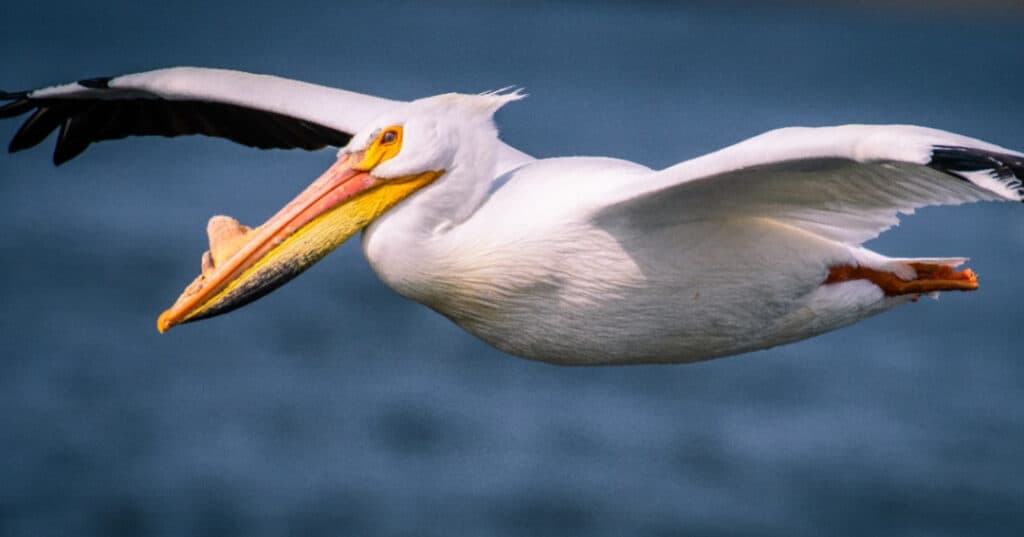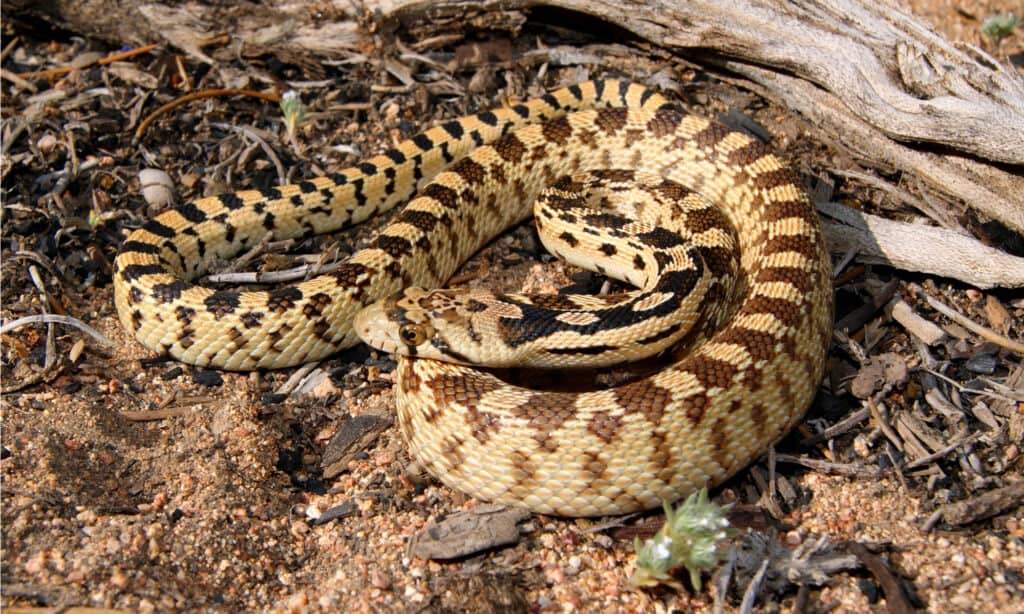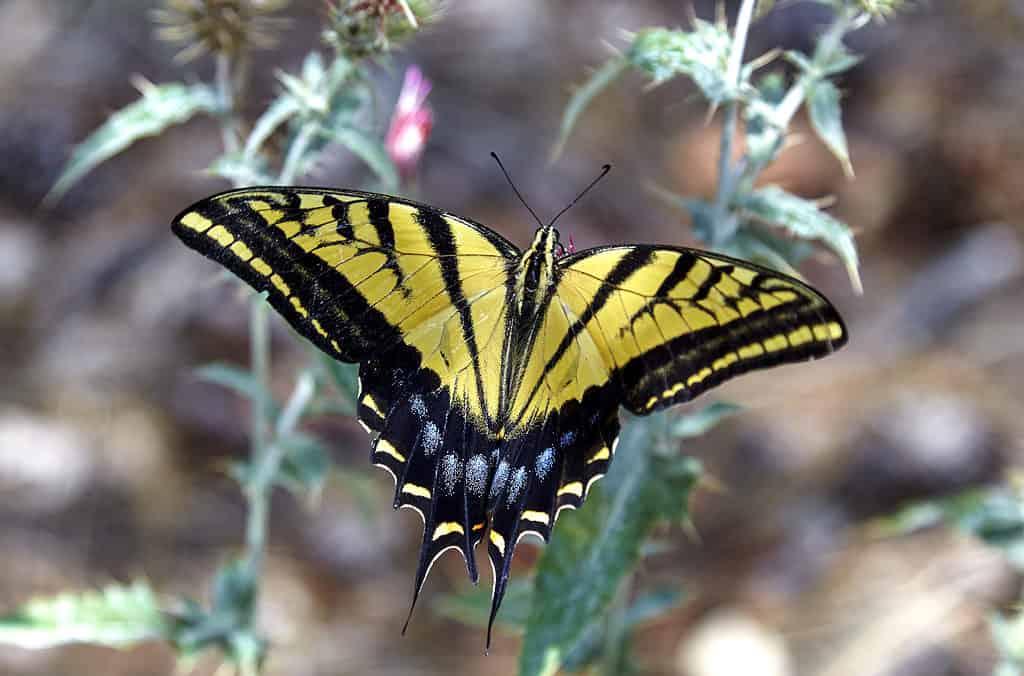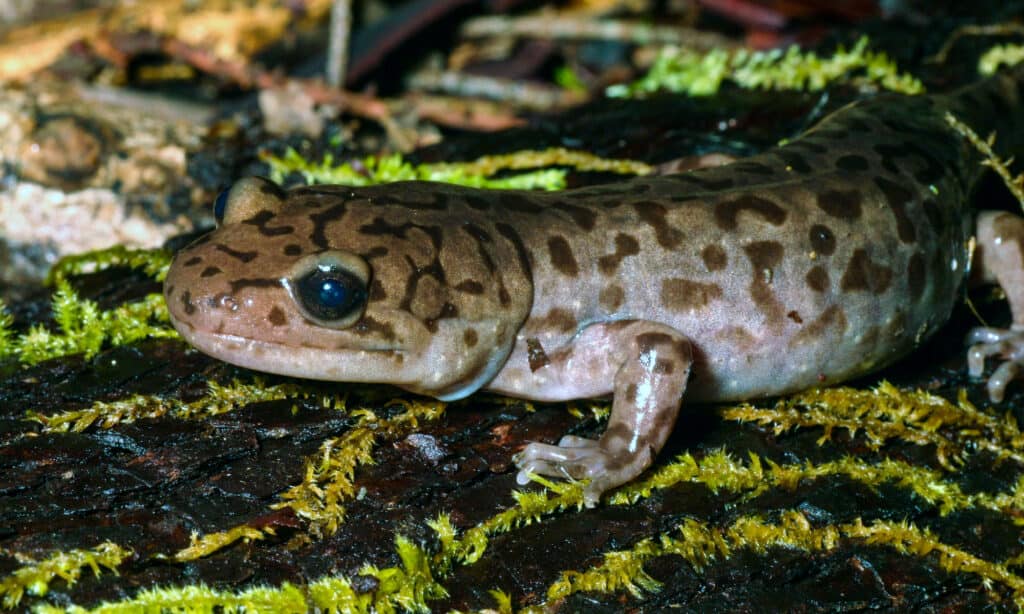Oregon boasts stunning hiking trails with rocky coastlines and gorgeous canyons, 11,000-foot Mount Hood, nearly 2,000-foot deep Crater Lake, and many more natural wonders. The waterfalls alone are worth mentioning – there are at least 238 in Oregon, including Multnomah Falls, Horsetail Falls, and South Falls.
Aside from the beautiful landscapes, there are hundreds of animal species, but we decided to focus on the largest animals in Oregon. We expected to see a few remarkable animals on our list of Oregon’s largest animals, and we weren’t disappointed.
Largest Mammal in Oregon: American Bison (Bison bison)
Once roaming through much of North America, people nearly exterminated this giant icon of the plains – and it was people who brought it back. Today, scientists accept two bison subspecies: the plains bison (Bison b. bison) and the wood bison (Bison b. athabascae), the plains bison being the larger of the two.
After decades of over-hunting and an outright extermination attempt, the bison were nearly gone. In the late 1800s, conservationists and ranchers gathered the last several hundred bison in different regions to preserve the species. They were successful, and about 30,000 buffalo are living essentially wild but owned by private individuals or organizations – many more are raised for meat by ranchers.
We were surprised to find the bison here. Even during its peak, there weren’t many bison in Oregon, so this sneaky little herd that started as a group of jail-breaking behemoths surprised everyone.
A wild herd of bison showed up at the base of the Wallowa Mountains in Oregon. No one knows how the bison arrived in Oregon, but they were sighted in 2011 and seemed to have established a breeding herd in Wallowa County. Most people assume that the bison escaped from a ranch, but it’s anyone’s guess.
The only mammal taller is the moose, but it doesn’t beat the bison for length or weight. The American bison is the largest mammal in North America and outweighs even the mighty moose. These giants can weigh up to 2,800 pounds and measure over six feet tall at the shoulder.

©Jack Dykinga – Public Domain by United States Department of Agriculture.
Largest Bird in Oregon: American White Pelican (Pelecanus erythrorhynchos)
These impressive birds garner attention wherever they land. Their long, orange-red bill and stark-white plumage with black flight feathers make them attractive animals. White pelicans fly in squadrons but feed while swimming.
In Oregon, the pelicans have breeding grounds where up to 5,000 birds raise their young each spring and summer. During the breeding season, American white pelicans develop a dusty black on their heads, and a prominent horn grows on their bills. The horn protects the bird’s more delicate bill during mating fights; after all the eggs are laid, the horn falls off.
This species has a wide range and migrates farther than most birds. After they spend the summers in estuaries and lakes in the northern United States and Canada, they migrate south to warmer regions, and some birds travel as far as South America.
Their scientific name means red-billed pelican, and German naturalist Johann F. Gmelin first described them in 1789. The American white pelican has the longest wingspan of any bird in Oregon and often reaches 10 feet, with a few reports of 12-foot specimens.
You might expect to see that icon of America, the bald eagle, listed here. However, as majestic as it is, the bald eagle has the third-largest wingspan in North America – behind the American white pelican and California condor.

©Jerek Vaughn/Shutterstock.com
Oregon’s Largest Snake: Gopher snake (Pituophis catenifer)
Due to Oregon’s northern location, it doesn’t have as many snake species as states like Arizona – home to over 40 snake species, and about half of those are venomous. Instead, Oregon only has about 15 with one venomous snake (the western rattlesnake).
While its name suggests that it eats gophers, it actually refers to its behavior: they steal abandoned gopher burrows for shelter. That’s not to say it wouldn’t eat a gopher if it could – it absolutely would.
The gopher snake is a relatively large colubrid native to a large swath of North America. It doesn’t grow as long as the indigo snake, but it can come close. This nonvenomous rodent hunter will eat anything it can fit down its throat. As a young snake, it eats lizards, snakes, small rodents, baby birds, and eggs; as it grows, a gopher snake can move up to larger animals like rabbits.
These snakes are opportunistic and go where the prey leads them, and they’re not terribly picky. They’ll move right into the neighborhood and remove the rodents for you. The largest snake in Oregon is the gopher snake, which averages 6-8 feet long, but can reach nine feet.

©Matt Jeppson/Shutterstock.com
Largest Insect in Oregon: Two-Tailed Swallowtail Butterfly (Papilio multicaudatus)
This rather large butterfly inhabits North America’s western regions from Alberta, Canada, and southwestern Saskatchewan, Canada, south through the United States and Mexico all the way to Guatemala. Its favorite habitat includes streams, especially those in wet valleys.
Two-tailed swallowtail butterflies are named for the multiple tails at the hind end of the wing. Similar to other striped swallowtails, this one has an eye spot near the lower edge of each hindwing. The butterfly has bright yellow and black markings; the female has more blue and orange markings and overall has brighter colors than the male.
This butterfly flies during the spring and summer and then lays eggs on the host plant. Adults feed on flower nectar, while caterpillars feed on the leaves of their host plants. The pupae slumber through the winter and emerge in the following May. With a 6.5-inch wingspan, the two-tailed swallowtail butterfly is Oregon’s largest insect. It’s also the largest western North American butterfly.

©Pamela Au/Shutterstock.com
Oregon’s Largest Fish: White Sturgeon (Acipenser transmontanus)
This primitive fish may not mature until its twenty-fifth birthday and can live over 100 years. It doesn’t reproduce quickly and may only breed every two to eight years. Like other sturgeon species, it has bony plates that run down its back, a forked tail, and a long flat snout. It’s hard to mistake a sturgeon for any other type of fish (except other sturgeons) because they’re a very unique-looking fish.
White sturgeon are fairly common in many of western North America’s larger rivers, and some populations migrate for spawning. While they’re typically found in freshwater, they sometimes travel in the ocean near the coast.
In Oregon, this bottom feeder is most common in the Columbia and Willamette rivers. The white sturgeon is Oregon’s largest fish and can reach 20 feet, but it averages about six feet long.

©Thesupermat, CC BY-SA 4.0 <https://ift.tt/msFhYH9>, via Wikimedia Commons – License
Largest Amphibian in Oregon: Coastal Giant Salamander (Dicamptodon tenebrosus)
This amphibian spends most of its time in underground burrows where the moisture level is higher. On rainy or very humid nights, it comes out to feed on anything it can shove in its mouth. It’s an opportunistic creature that isn’t picky and will eat snails, slugs, insects, worms, small rodents, snakes, and other giant salamanders.
The coastal giant salamander is one of the largest salamanders in North America and begins life as a larva with external gills and a caudal fin attached to its tail. As it matures, it develops strong legs and internal lungs – most of the time. Some coastal giant salamanders keep their gills when they mature sexually, in a process called neoteny. This is more common in British Columbia populations, but it can happen in any of them.
This species inflicts a painful bite when threatened and excretes nausea-inducing toxins through its skin. The coastal giant salamander can grow to 13 inches long, making it the largest amphibian in Oregon.

©Michael Benard/Shutterstock.com
Up Next
- 5 of the Biggest Spiders in Oregon
- The 7 Biggest Sharks Off Oregon’s Coast
- Discover The 10 Largest Animals In Florida, and Where You’ll Find Them
The post Discover The 6 Largest Animals In Oregon, and Where You’ll Find Them appeared first on AZ Animals.
from Animal News, Facts, Rankings, and More! - AZ Animals https://ift.tt/m0wZy42